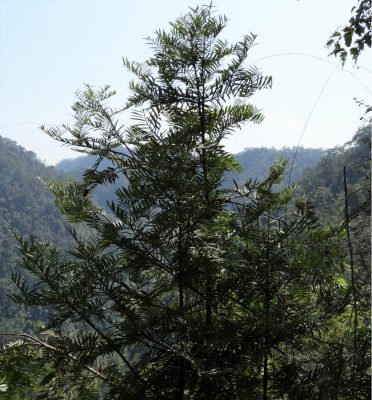Amentotaxus hatuyenensis first described in 1996 by Tiên Hiêp Nguyên in Flore du Cambodge du Laos et du Vietnam, 28th edition, is commonly know as Hà Tuyên catkin-yew; as well as Dẻ tùng sá»c nâu rá»™ng, Sam bông sá»c nâu rá»™ng in the Vietnamese language. The species name refers to Hà Tuyên, a province in northern Vietnam, which contained the type locality. Hà Tuyên province was subdivided in 1992, and the known distribution of this species is now in Hà Giang province.
Description. Hà Tuyên catkin-yew is an evergreen coniferous species of shrubby tree that grows to mature heights of 65 feet (20 m) tall with a trunk up to 10 inches (25 cm) in diameter, measured at breast height. Descriptions are virtually the same as for A. yunnanensis, with the following differences.
Hardy to USDA Zone 9, cold hardiness limit between 20° and 30°F (-6.6° and -1.1°C).
A. hatuyenensis faces a high risk of extinction in the wild due to habitat loss (Hiep 2004). It is known from only a few locations but overall its status and distribution appear to still be poorly known.
